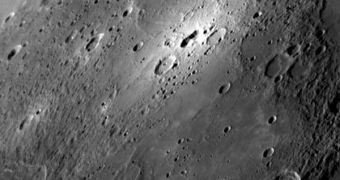The third and final flyby that NASA's MESSENGER spacecraft performed around Mercury has revealed a new take on the innermost planet's mysterious bright spot, a feature that astronomers cannot explain yet. It was first discovered during the probe's second flyby, and experts have been hypothesizing on its origins ever since. The new photo was taken as MESSENGER flew 142 miles (228 kilometers) above the planet's surface, in an elegant, gravity-assist maneuver that would ensure its capture into Mercury's orbit in 2011, Space reports.
A larger set of images was captured during the flyby, but some of them could not be downlinked right away on account of a minor data glitch. “We do have some new science from the flyby. We missed a little icing on the cake. What is important is that the spacecraft and the instruments are healthy. We're all working through this,” Johns Hopkins University (JHU) Applied Physics Laboratory (APL) expert and MESSENGER project scientist Ralph McNutt said yesterday.
The bright spot got its third known image during the flight. It was photographed before by MESSENGER, with its Narrow Angle Camera, on October 6, 2008, and again by astronomer Ronald Dantowitz, who was using an Earth-based telescope. The recent image, while indeed revealing more details of the feature, is far from providing planetary scientists with the answers they sought. An irregular depression was found to exist at the center of the spot, and some experts believe it may have formed through volcanic activity.
Further studies will be conducted when the spacecraft enters the Mercury orbit, in 2011. The MErcury Surface, Space ENvironment, GEochemistry, and Ranging probe was launched in 2004, and has performed three flybys up until now. The last maneuver placed it on the correct course to be captured by the innermost planet's gravity in about two years, when the orbiter stage of the mission is set to begin. To get this far, the probe had to perform one Earth swing, and two Venus swings.

 14 DAY TRIAL //
14 DAY TRIAL //